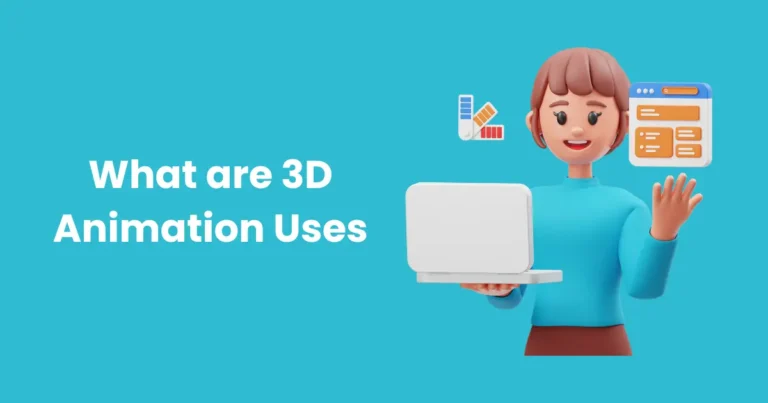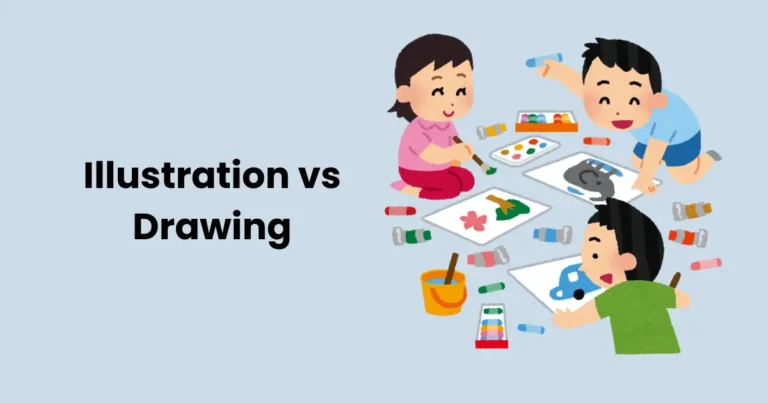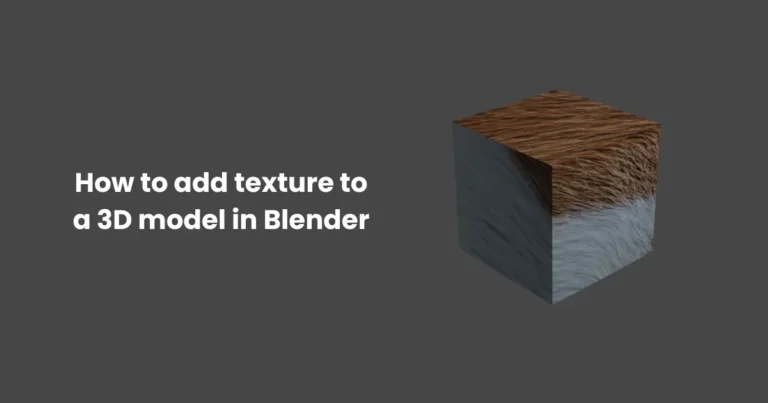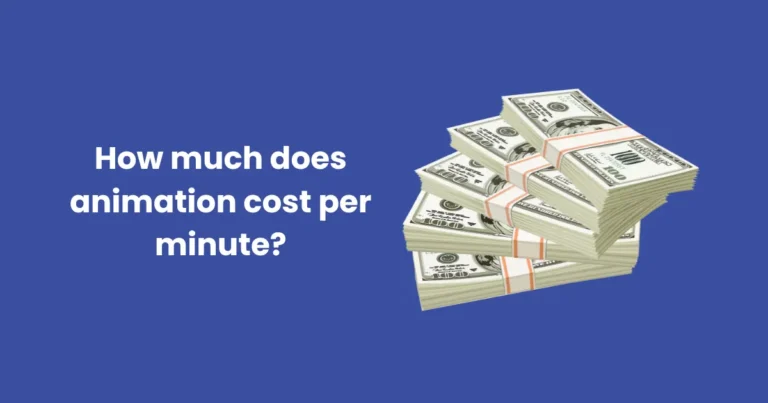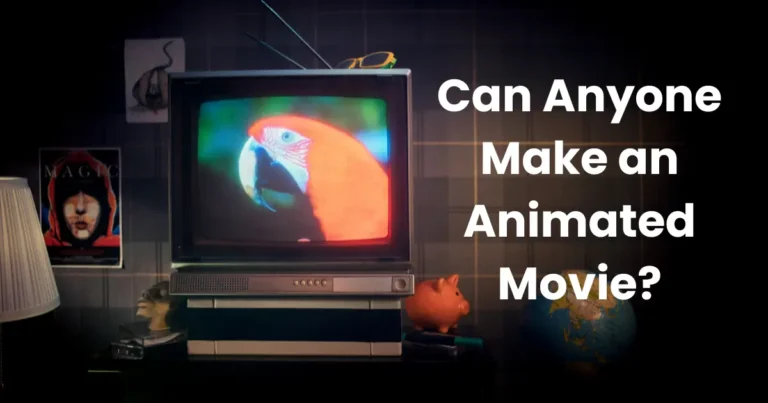Animation ideas for students | Best Animation Ideas for Beginners in 2025
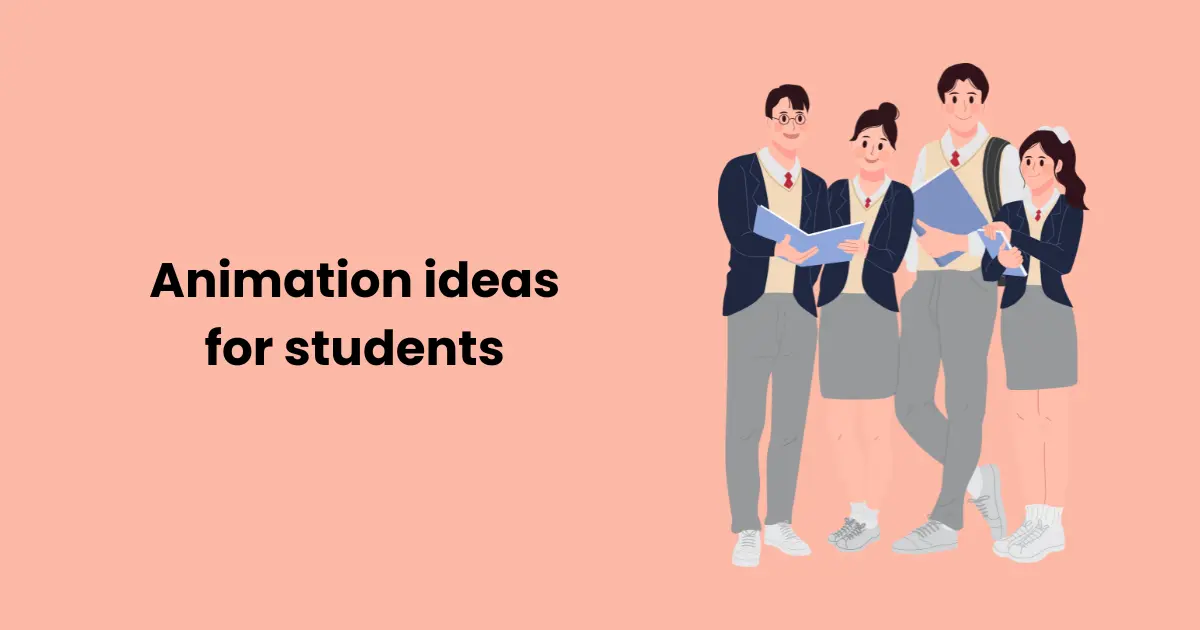
Contents
Animation is a powerful way for students to express creativity while developing technical and storytelling skills. With advancements in technology, animation has become more accessible, making it an exciting field for learners of all ages. Whether students are interested in creating simple 2D characters or exploring complex 3D designs, animation offers endless possibilities.
This article explores a variety of animation ideas for students to spark creativity and enhance their skills. From simple beginner projects like flipbook animations to advanced group activities like creating a short animated film, there’s something for everyone. Each idea is designed to be fun, educational, and achievable, regardless of experience level.
By the end of this guide, students will have a list of exciting animation projects to try, along with tips for getting started and tools to help them succeed. Dive in to discover the perfect animation project to unleash your creative potential!
Getting Started with Animation
Basic Tools and Software for Student Animators
Embarking on an animation journey begins with choosing the right tools. Fortunately, there’s a wide range of animation software suitable for students, from free platforms to professional-grade tools. Here are some popular options:

- Pencil2D: Ideal for beginners creating 2D animations, this software is simple and free to use.
- Blender: A powerful open-source tool for creating 3D animations, perfect for students ready to take on advanced projects.
- Stop Motion Studio: Great for stop-motion enthusiasts, offering an easy interface for assembling creative animations.
- Adobe Animate: Professional software for 2D animations, suitable for students with a creative flair for storytelling.
In addition to software, students need essential tools such as drawing tablets, smartphones for stop-motion, and a decent computer for running animation programs smoothly.
Understanding the Animation Process
Animation is a step-by-step process that transforms ideas into moving visuals. Here’s an overview of the key stages:
- Conceptualization: Start with an idea or story. Students can brainstorm characters, plotlines, and visual styles.
- Storyboarding: Create a visual roadmap of the animation by sketching scenes sequentially.
- Designing Characters and Assets: Draw or model the characters and objects that will appear in the animation.
- Animating: Use software or techniques like stop-motion to bring the designs to life. Focus on smooth transitions and realistic movements.
- Adding Sound and Effects: Enhance the animation with background music, sound effects, and voiceovers.
- Editing and Finalizing: Review the animation for errors, make improvements, and export it in the desired format.
By mastering these steps and using appropriate tools, students can create stunning animations that bring their creative visions to life. This foundational knowledge prepares them for exploring exciting animation ideas for students in both individual and group projects.
Creative Animation Ideas for Beginners
Starting with simple projects is the best way for students to build confidence and master basic animation techniques. These animation ideas for beginners are fun, manageable, and perfect for sparking creativity.
1. Stick Figure Animation
Stick figure animation is a fantastic starting point for beginners. Students can draw simple stick figures on free software like Pencil2D or create them frame by frame on a whiteboard or paper. The focus here is on understanding movement and timing, making it a great exercise in animation fundamentals.
Tips:
- Start with simple actions like walking or jumping.
- Experiment with speed to understand timing.
2. Flipbook Animation
Creating a flipbook is a classic and hands-on way to learn animation. Students draw a sequence of images on the corners of a notepad or a stack of cards. Flipping through them quickly gives the illusion of motion.
What You’ll Learn:
- Basics of frame-by-frame animation.
- The importance of small changes between frames for smooth motion.
Pro Tip: Combine this traditional technique with digital tools by photographing each frame and compiling them into an animation using software like Stop Motion Studio.
3. Simple 2D Character Animation
With free tools like Synfig or TupiTube, students can create basic 2D character animations. They can start by animating facial expressions or simple movements like waving or running.
Key Benefits:
- Develop drawing skills and character design.
- Learn how to layer elements (background, character, etc.).
Steps to Start:
- Sketch your character design.
- Animate basic motions like blinking or a head turn.
- Gradually add more complex movements.
These beginner-friendly animation ideas for students provide a solid foundation in understanding motion, timing, and storytelling. They’re also great for building excitement and motivation to tackle more advanced projects!
Intermediate Animation Ideas
Once students have mastered the basics, they can move on to more engaging and technically challenging projects. These intermediate animation ideas for students help refine skills and encourage creativity, while introducing concepts like storytelling, synchronization, and collaboration.

1. Stop Motion with Everyday Objects
Stop motion is a creative technique where objects are photographed frame by frame to create movement. Students can use everyday items like toys, clay, or even food to craft unique animations.
Why It’s Great:
- Teaches patience and attention to detail.
- Encourages creative use of materials.
Steps to Try:
- Choose a theme or story.
- Arrange objects incrementally and take photos.
- Compile the frames into an animation using tools like Stop Motion Studio or iMovie.
Example Project: Animate a race between toy cars or a clay figure’s journey through a miniature world.
2. Story-Based Animation
Creating a short animated story allows students to combine their animation skills with storytelling. Using 2D or 3D software, students can develop characters, plots, and scenes to tell a compelling story.
What You’ll Learn:
- Scriptwriting and storyboarding.
- Synchronizing animation with dialogue or sound effects.
Tips:
- Start with a simple story that can be told in 30-60 seconds.
- Focus on key moments rather than animating every detail.
3. Creating Animated GIFs
GIFs are a popular and easy way to practice looping animations. Students can design a short, repeating action like a bouncing ball, blinking eyes, or a waving hand.
Tools to Use:
- Free software like Krita or GIMP.
- Online platforms such as Ezgif for quick GIF creation.
Advantages:
- Teaches looping techniques and timing.
- Provides instant gratification as students can share their creations online.
4. Character Expressions and Lip-Syncing
This idea focuses on animating characters’ facial expressions and syncing their lip movements with audio. It’s perfect for students looking to add personality and realism to their animations.
Key Skills Developed:
- Expressive character design.
- Audio synchronization.
How to Practice:
- Record a short dialogue or use pre-recorded lines.
- Animate the character’s mouth and expressions to match the audio.
These intermediate animation ideas for students challenge them to think more critically about movement, timing, and narrative structure. They serve as a bridge to advanced projects while still being enjoyable and accessible.
Advanced Animation Projects for Students
Advanced animation projects provide students with the opportunity to tackle complex techniques, refine their skills, and create professional-level work. These animation ideas for students focus on using sophisticated tools and exploring advanced concepts in storytelling, motion, and technology.

1. 3D Model Animation
3D animation is a step up from 2D, requiring knowledge of modeling, rigging, and texturing. Students can create a fully animated 3D character or a short sequence using software like Blender, Maya, or Cinema 4D.
Key Skills Learned:
- Building and rigging 3D models.
- Applying textures and lighting for realism.
- Animating movement with precision.
Example Project: Animate a character walking through a dynamic environment or interacting with objects.
2. Using Motion Capture for Animation
Motion capture (mocap) technology allows students to record real-world movements and apply them to digital characters. Even without advanced equipment, free tools like Plask or Rokoko Studio can be used to experiment with mocap.
Benefits:
- Creates realistic movements.
- Introduces cutting-edge animation techniques.
How to Start:
- Record motion using a webcam or smartphone.
- Import the data into 3D animation software.
- Apply the motion to a character model.
3. Creating a Short Animated Film
A short animated film is a comprehensive project that combines multiple animation techniques. It allows students to showcase their storytelling skills while applying advanced animation concepts.
Steps to Success:
- Pre-production: Write a script, design characters, and storyboard the film.
- Production: Animate scenes, record voiceovers, and add sound effects.
- Post-production: Edit the film and polish it with transitions and effects.
Project Idea: Create a 2-3 minute film based on a social issue or a fictional adventure.
4. Special Effects Animation
Special effects animation focuses on creating elements like explosions, fire, water, or magical effects. Students can use tools like After Effects or Blender to integrate these effects into their projects.
Why It’s Useful:
- Enhances visual appeal.
- Prepares students for work in VFX industries.
Example Project: Add realistic rain or fire effects to a scene or create a character with glowing magical abilities.
5. Interactive Animations for Games or Apps
Students with an interest in game development can explore creating interactive animations. This involves animating characters, objects, or environments specifically for use in games or apps.
Key Learning Areas:
- Understanding game mechanics.
- Working with game engines like Unity or Unreal Engine.
Project Example: Animate a character with idle, walking, and attack movements for a game.
Advanced animation ideas for students like these push the boundaries of creativity and technical ability. They also offer valuable portfolio pieces that can be showcased for future educational or career opportunities.
Animation Ideas for Group Projects
Group projects are a fantastic way for students to learn teamwork, problem-solving, and creative collaboration. These animation ideas for students focus on cooperative tasks, encouraging each member to contribute their unique skills while working toward a shared vision.

1. Collaborative Storyboard Animation
In this project, the group works together to create a complete animation from start to finish, with each member contributing to the storyboard and animating specific scenes.
Steps to Execute:
- Brainstorm a story as a team and divide it into scenes.
- Assign each scene to a group member for animation.
- Compile all the scenes into one cohesive video.
What Students Learn:
- The importance of consistent style and tone.
- Effective communication and coordination.
Project Idea: Create a short film about a group of characters overcoming a challenge, with each team member responsible for animating one character or scene.
2. Group Stop-Motion Film
Stop-motion projects work wonderfully for group collaborations. Students can use clay, toys, or everyday objects to create a unique animated story.
How to Start:
- Assign roles like set design, lighting, animation, and editing to different team members.
- Work together to photograph and compile the stop-motion frames.
- Add sound effects and music as a team.
Project Idea: Recreate a famous scene from history or literature using clay figures or LEGO characters.
3. Designing Animated Educational Videos
Groups can create animations to explain a concept, teach a lesson, or raise awareness about an issue. These videos can be both informative and engaging.
Why It’s Beneficial:
- Encourages research and creativity.
- Combines storytelling with educational content.
Steps to Try:
- Choose a topic (e.g., environmental awareness, a science concept, or a historical event).
- Create characters and visuals that support the lesson.
- Animate scenes that clearly explain the subject matter.
4. Exquisite Corpse Animation
This project allows creativity to flow freely by having each group member contribute to a continuous animation without knowing the full story.
How It Works:
- The first animator creates a short scene and passes only the final frame to the next member.
- The next person continues the animation based on that frame, and so on.
- The result is a surprise animation that blends each member’s unique style.
Benefits:
- Fosters creativity and spontaneity.
- Shows how different styles can merge into one project.
5. Music Video Animation
Groups can animate a music video for a favorite song or an original piece. Each member can focus on specific aspects, such as character animation, background design, or syncing visuals to the music.
Steps to Try:
- Choose a song and storyboard the key moments.
- Assign roles based on skills, such as animating characters or designing effects.
- Combine all elements to match the rhythm and mood of the song.
Project Idea: Create a vibrant animated music video featuring dancing characters and dynamic visual effects.
6. Virtual Reality (VR) or 360° Animation
For tech-savvy groups, creating a VR or 360° animation offers an exciting challenge. Students can design immersive environments and animations that viewers can explore using VR headsets or on platforms like YouTube.
Why It’s Exciting:
- Introduces cutting-edge animation technology.
- Encourages experimentation with spatial design.
Project Idea: Create a virtual tour of a fantasy world where viewers can interact with animated elements.
These animation ideas for group projects inspire collaboration and creativity, allowing students to learn from each other and produce impressive results. Whether they focus on storytelling, education, or technical innovation, these projects foster skills that are invaluable for both academic and professional growth.
Incorporating Animation into School Projects
Animation can transform ordinary school projects into engaging and visually captivating presentations. It helps students present complex ideas creatively, making their work stand out. Incorporating animation into school projects allows students to combine storytelling, design, and technical skills while enhancing their learning experience.

1. Animated Science Explainers
Animation is a great tool for explaining scientific concepts, such as the water cycle, photosynthesis, or the human digestive system. Students can create step-by-step animated videos that break down complicated processes into understandable visuals.
Tools to Use:
- Blender for 3D effects like molecular simulations.
- Animaker for 2D animations with vibrant graphics.
Benefits:
- Makes abstract ideas tangible and easy to grasp.
- Demonstrates a deeper understanding of the subject.
2. Historical Reenactments with Animation
For history projects, students can use animation to reenact significant events or illustrate historical narratives. Animated characters and environments can bring the past to life, creating an immersive learning experience.
Project Ideas:
- Animate a timeline of key events in a war or movement.
- Create a short film depicting a day in the life of a historical figure.
Why It Works:
- Combines research and creative storytelling.
- Engages viewers more effectively than static images or text.
3. Interactive Animated Presentations
Instead of traditional slideshows, students can create interactive animated presentations for their school projects. Animations can include clickable elements, transitions, or short animation clips to emphasize key points.
Software to Try:
- Powtoon or Prezi for dynamic presentations.
- Unity for creating interactive animations with user engagement.
Example: A geography project featuring an animated map where viewers click regions to learn about local cultures, climates, or landmarks.
4. Literary Projects with Animated Storytelling
For literature classes, students can animate scenes from books, poems, or plays. This approach is perfect for visualizing abstract concepts or interpreting themes creatively.
Ideas to Explore:
- Animate a famous soliloquy from Shakespeare.
- Visualize the plot of a novel through animated character interactions.
What Students Gain:
- A deeper appreciation for literature.
- Improved skills in symbolism and visual storytelling.
5. Mathematical Concepts in Animation
Animation can make math fun and accessible by demonstrating abstract concepts like geometry, fractions, or probability. For instance, animating a character solving a problem step by step can simplify the learning process.
Example Project: Animate how the Pythagorean theorem works by showing a right triangle and its areas dynamically filling up.
Advantages:
- Reinforces understanding through visualization.
- Encourages problem-solving and creative thinking.
6. Environmental Awareness Campaigns
Students can create animations to highlight environmental issues for science or social studies projects. Animated videos can depict issues like deforestation, pollution, or climate change and offer solutions.
Key Components:
- Simple visuals to represent problems and data.
- Inspiring messages to encourage action.
Project Idea: Animate the impact of single-use plastics on marine life and suggest ways to reduce plastic waste.
7. Animated Art Projects
For art classes, students can use animation to explore movement, perspective, or abstract themes. Animations can be inspired by famous art styles or created as original digital art pieces.
Ideas to Try:
- Create a moving version of a famous painting.
- Develop a digital art piece that evolves over time through animation.
Tools:
- Adobe Animate for detailed 2D art.
- Procreate for drawing and basic animation on tablets.
Why Incorporate Animation?
- Makes learning interactive and fun.
- Encourages critical thinking and creativity.
- Prepares students for future opportunities in design and technology.
By integrating animation into school projects, students can enhance their presentations, communicate ideas effectively, and stand out in academic environments. These animated projects also provide a platform for developing skills that go beyond the classroom.
Conclusion
Animation offers students a unique way to express their creativity, communicate ideas, and develop technical and artistic skills. From simple beginner projects to advanced group collaborations, the possibilities for exploring animation are vast and exciting. By experimenting with various techniques, embracing challenges, and consistently refining their craft, students can bring their stories and visions to life in ways that captivate and inspire. These animation ideas for students provide a structured pathway for learning, creativity, and innovation.
As students progress, they not only gain practical animation skills but also learn critical thinking, teamwork, and problem-solving, all of which are invaluable for personal and professional growth. Whether it’s creating a short film, working on interactive presentations, or experimenting with motion capture, the journey into animation fosters a blend of discipline and imagination. With dedication and enthusiasm, students can transform their passion for animation into remarkable achievements and even future careers.

